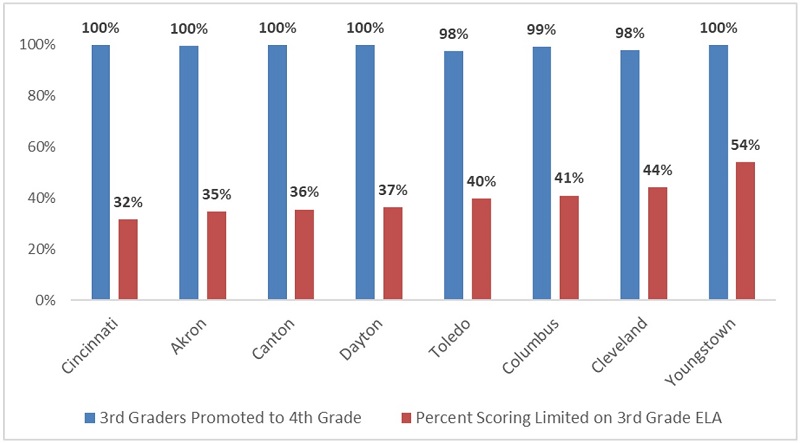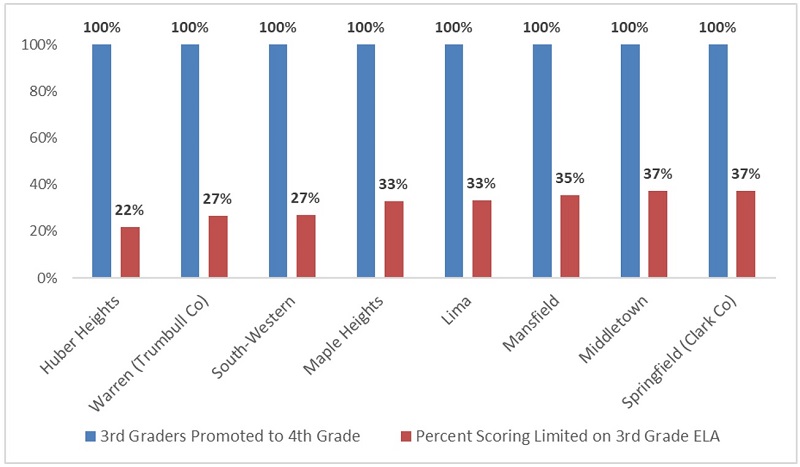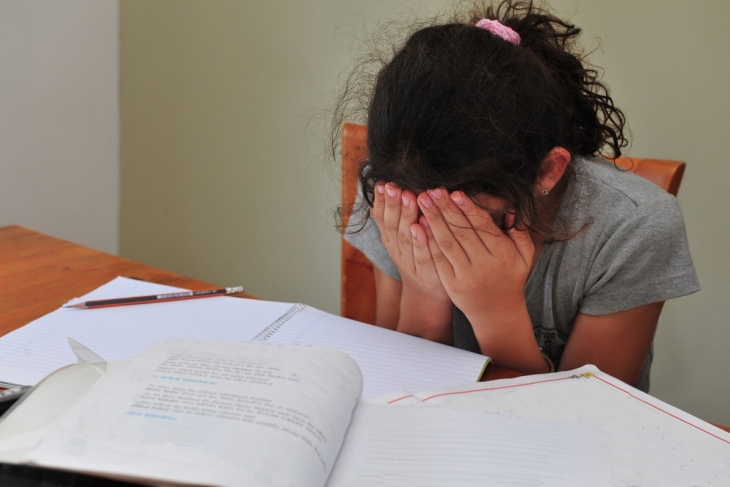For the better part of the past decade, Ohio has required schools to hold back third graders who do not meet state reading standards. This provision, part of the Third Grade Reading Guarantee, seeks to eliminate the discredited practice of “social promotion” and instead ensure that children with reading deficiencies receive the extra time and support needed to read proficiently. Prior to the pandemic, the policy appears to have moved the achievement needle with fewer students struggling on state reading assessments.
Despite its common sense and the evidence of progress, critics have decried retention, and House legislators recently passed a bill that would axe the requirement. In testimony touting the legislation, district administrators assured lawmakers that—even without a requirement—“schools would continue to intervene with these students to help them grow their reading skills.”
Well, that’s a fantasy. Just consider data from 2021–22, a year in which state lawmakers temporarily relieved schools of the retention requirement due to pandemic-related concerns. What do we see? Last year, nary a third grader was held back in Akron, Dayton, Canton, Cincinnati, and Youngstown. Only miniscule numbers were retained in Toledo, Cleveland, and Columbus. The blanket promotion occurred despite the fact that a whopping 32 to 54 percent of the districts’ students scored at the lowest achievement level—known as “limited”—on their third grade English language arts (ELA) assessment. We must realize that third graders with results this low are truly floundering: They’ve earned less than twelve out of forty-one points on the assessment, and the Ohio Department of Education says they demonstrate “minimal command” of state literacy standards. Without retention and the intensive interventions required under the Guarantee, such students are almost assuredly going to have difficulties as they progress through middle and high school.
Figure 1: Third grade promotion rates and students scoring “limited,” Big Eight districts, 2021–22

Universal promotion wasn’t merely a big-city phenomenon. Figure 2 shows eight other districts that passed all of their third graders, even though a quarter to a third scored in the limited category. Middletown and Springfield school districts in Southwest Ohio promoted every third grader despite 37 percent having “minimal command” in reading.
Figure 2: Third grade promotion rates and students scoring “limited,” selected districts, 2021–22

Statewide, an astonishing 469 of 605 districts promoted 100 percent of third graders in 2021–22, and 565 districts had sky-high rates above 98 percent. Just five promoted less than 90 percent of third graders. The upshot of this requirement-free year? Ohio schools waved through virtually every third grader last year, even as 19.5 percent of them—just shy of 25,000 children—scored limited on their reading exams. One can only guess how many of them are now in fourth grade, not receiving any extra attention and continuing to struggle academically. We also have no idea how many schools followed temporary law passed for 2021–22 that required consultation with parents of students scoring at this level before promoting them. All this is what happens when state lawmakers remove clear requirements for promotion at this critical juncture in a child’s education.
Promoting children who can’t read sets them up for long-term failure. Make no mistake: If lawmakers give up on the Third Grade Reading Guarantee, social promotion will once again prevail, and thousands of Ohio students will be worse off as a result.


